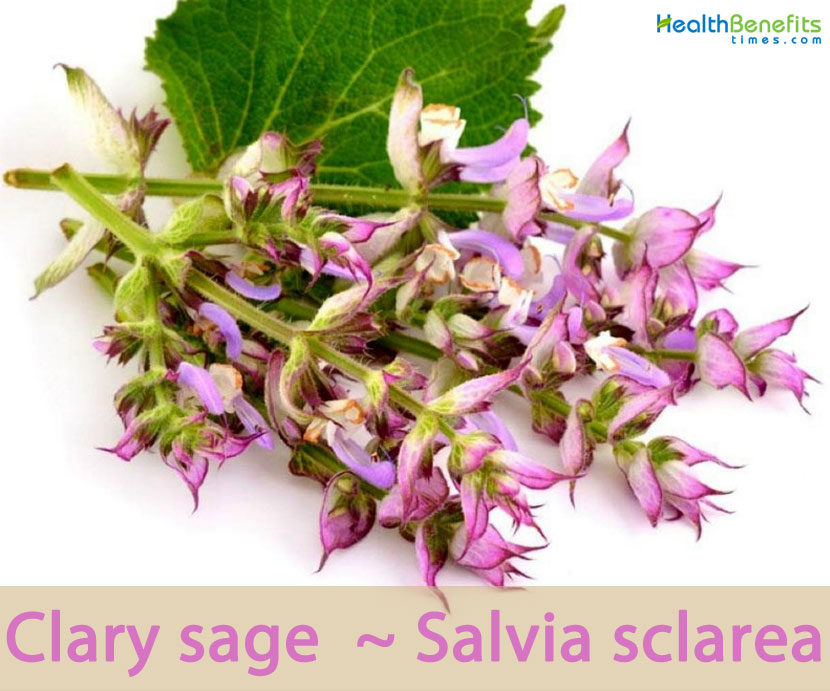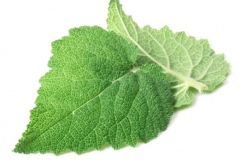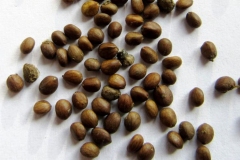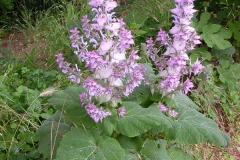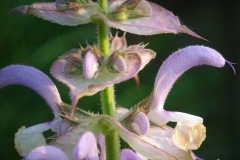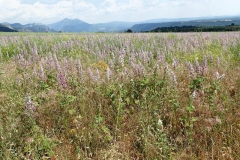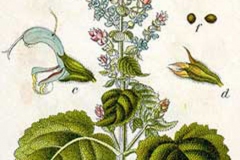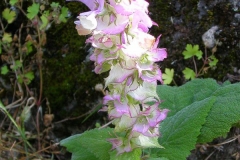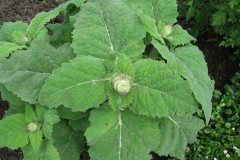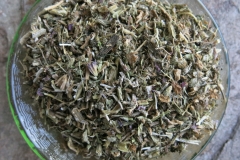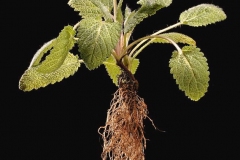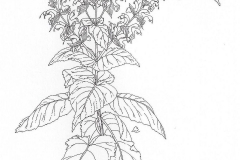| Clary sage (clary) Quick Facts | |
|---|---|
| Name: | Clary sage (clary) |
| Scientific Name: | Salvia sclarea |
| Origin | Syria, Southern France, Italy, and Switzerland, also North Africa and Central Asia |
| Colors | Pale brown |
| Shapes | Nearly 4 nutlets that are 3 mm long and 2 mm wide, round, scarcely trigonous, rounded pale brown with darker veins |
| Taste | Aromatic, warm and slightly bitter, astringent |
| Health benefits | Hormone Balance, Childbirth, Menopause, Insomnia, Skin Health, Obesity and diabetes, Eye Cure |
| Name | Clary sage (clary) |
|---|---|
| Scientific Name | Salvia sclarea |
| Native | Syria, Southern France, Italy, and Switzerland, also North Africa and Central Asia. Today it is cultivated worldwide, mostly within Europe, England, Morocco, Russia, and the United States |
| Common Names | Clary, Europe sage, Clary sage, Salvia romana, European sage, Clear-eye, See-bright sage, garden clary, common clary |
| Name in Other Languages | Afrikaans: Clary Albanian: Clary, sherbelë, shëngjini Amharic: Kilarī (ክላሪ) Arabic: Klari (كلاري), dinu (dannw) (دنو (دَنّو), daqn alfar (daqn alfara) (دقن الفار (دَقن الفار), qaseayn mutasalib (قصعين متصلب) Aragonese: Amaro, oropesa Armenian: Klari (կլարի), Yeghespak mshkynkuyzayin (Եղեսպակ մշկընկույզային) Azerbaijani: Aydın, Müşk sürvəsi Basque: Aindurrina Bengali: Clary (kle(ə)rē) Bulgarian: Mecha peta (меча пета), muskaten konski bosilek (мускатен конски босилек), salviya sklarea (салвия склареа) Burmese: Clary (kle(ə)rē) Catalan: Gallitrichos, herba madrona, ormí, salvia romana, herba santa, madrona, orval, tarrac Chinese: Huānlè (欢乐), Kuàilè shǔ wěi cǎo (快樂鼠尾草) Croatian: Clary, muškatna kadulja Czech: Hlína, Šalvia muškátová, Šalvěj muškátová Danish: Clary, Skarleje, Broget Salvie Dutch: Clary, muskaatsalie, scharlei English: Clary, Europe sage, Clary sage, Salvia romana, European sage, Clear-eye, See-bright sage, garden clary, common clary Esperanto: Klaro Estonian: Clary, muskaatsalvei Filipino: Clary Finnish: Salvia, Myskisalvia French: Clary, Sauge sclarée, Sclarée, Toute-bonne, orvale Galician: Amaro, herba de la madre, salvia romana Georgian: Klari (კლარი),kharisvarda (ხარისვარდა) German: Clary, Muskateller-Salbei, Muskatsalbei Greek: Klarí (κλαρί) Gujarati : Klērī (ક્લેરી) Hausa: Murfi Hebrew : Marvah merushetet, קלרי, מרווה מרושתת, מַרְוָה מְרֻשֶּׁתֶת Hindi: Clary (kle(ə)rē) Hungarian: Zsálya, Muskotályzsálya Icelandic: Clary Indonesian: Clary Irish: Clary Italian: Sclarea, Chiarella, Salvia moscatella, Scanderona, erba moscadella, scarleggia Japanese: Kurarī (クラリー), kurarîseji (クラリセージ), onisarubia (オニサルビア) Javanese: Clary Kannada: Klāri (ಕ್ಲಾರಿ) Kazakh: Ayqın (айқын), Muskat səlbení (Мускат сәлбені) Korean: Keullali (클라리) Kurdish: Clary Lao: Kle(ə)rē (clary) Latin: Sclareiam Latvian: Māla Lithuanian: Clary, Kvapusis šalavijas Macedonian: Klary (клари) Majorcan: Herba santa, tarrac Malagasy: Clary Malay: Clary Malayalam: Klāri (ക്ലാരി) Maltese: Clary Marathi : Kleree (क्लेरी) Mongolian: Tungalag (тунгалаг) Nepali: Kleree (क्लेरी) Norwegian: Clary Oriya: କ୍ଲାରି Pashto: کلی Persian: کلاری, سالویا اسکلاریا Polish: Clary, Szałwia muszkatołowa Portuguese: Clary, Salva-do-sul, balsam, sclarea, esclareia, salva sclarea, salva-esclarea Punjabi: Kalērī (ਕਲੇਰੀ) Romanian: Clary, iarba Sfintului Ioan Russian: Shalfey muskatnyy (шалфей мускатный), shalfey bol’shoy (шалфей большой), shalfey frantsuzskiy (шалфей французский Serbian: Clari (Цлари), Muskatna žalfija (Мускатна жалфија) Sindhi: ڪلري Sinhala: Klāri (ක්ලාරි) Slovak: Šalvia muškátová Slovenian: Clary, muškatna kadulja Spanish: Hierba, Esalarea, Salvia, Salvia romana, almaro, amardo, amaro, amero, sclarea, hierba de San Jorge hierba de San Juan, maro, maro granadino ancho, maro vulgar, oripesa, yerba de San Juan, hierba de los ojos, madrona, orobal, oropesa Sudanese: Clary Swedish: Clary, Muskatellsalvia Tajik: Ravşan (равшан), Marvak (Марвак) Tamil: Kiḷāri (கிளாரி) Telugu: Klārī (క్లారీ) Thai: Ngwngcĥāng (งวงช้าง) Turkish: Adaçayı, Misk ada çayı, paskulak Ukrainian: Klari (кларі), Shavliya muskatna (Шавлія мускатна) Upper Sorbian: Mušotowa želbija Urdu: کلیر Uzbek: Ravshan Vietnamese: Thư ký Welsh: Clary, Clari Zulu: Mfowethu |
| Plant Growth Habit | Much-branched and upright biennial or short lived herbaceous perennial plant |
| Growing Climates | Rocky igneous slopes, mixed deciduous and coniferous woodland, shale banks, roadsides, fields and valleys |
| Plant Size | 3 to 4 ft. (0.91 to 1.22 m) in height |
| Stem | Thick square stems that are covered in hairs |
| Leaf | Leaves are arranged in pairs, almost stalk less and are almost as large as the hand, oblong and heart-shaped, wrinkled, irregularly toothed at the margins and covered with velvety hairs. |
| Flowering season | June to August |
| Flower | Flowers are small, tubular, two-lipped, 2-3 cm, creamy white to lilac subtended by papery, white to pinkish-purple bracts. Upper lip is sickle-shaped, tube about 1 cm long |
| Fruit Shape & Size | Nearly 4 nutlets that are 3 mm long and 2 mm wide, round, scarcely trigonous, rounded pale brown with darker veins |
| Fruit Color | Pale brown |
| Seed | Seeds are blackish brown, rounded to triangular contained in long, toothed husks |
| Propagation | By seed |
| Flavor/Aroma | Very strong, aromatic scent, somewhat resembling that of Tolu |
| Taste | Aromatic, warm and slightly bitter, astringent |
| Plant Parts Used | Herb, leaves, seeds |
| Available Forms | Infusion or a tincture |
| Season | September |
| Health Benefits |
|
| Precautions |
|
Plant Description
Clary sage is a much-branched, upright, biennial or short lived herbaceous perennial plant that normally grows about 3 to 4 ft. (0.91 to 1.22 m) in height. The plant is found growing in rocky igneous slopes, mixed deciduous and coniferous woodland, shale banks, roadsides, fields and valleys. Stem is thick, square, erect stem, 20-120 cm high and branched toward the top. Stem is pubescent to hirsute, in the upper part covered by glandular, gray hairs that give the balsam fragrance. Annual leaves are in rosette, while biennial are arranged along the stem in pairs. Lower leaves are with petiole, 30 cm long and twice as long as the leaves located on the upper part of the stem; upper are sessile, ovate to obovate. Simple and multicellular glandular trichomes are present on both sides of leaves. Leaves have a wrinkled texture and have toothed to double toothed margins.
Flower
Flowers are arranged in showy spikes of numerous 6-10-flowered distant verticillasters. Bracts or floral leaves are large, green, white or pink, membranous, cuspidate, as long as or longer than flowers. Flower-stalks are 2-3 mm, spreading-erect. Sepal cup is ovate-bell-shaped, about 1 cm in flower lengthening to about 1.3 cm in fruit, with glandular and eglandular hairs and stalk less glands. It also consists of upper lip with 3 spinulose teeth; lower lip with 2 narrow ovate spinulose teeth. Flowers are small, tubular, two-lipped, 2-3 cm, creamy white to lilac subtended by papery, white to pinkish-purple bracts. Upper lip is sickle-shaped, tube about 1 cm long. Stamens have an elongated connective and a sterile dolabriform lower theca. The plant has both male and female flowers (a hermaphrodite) which are mostly insect pollinated. Flowering normally takes place in between June to August. Flowers and foliage are very aromatic. The flowers, leaves and stems of the clary sage are widely been used for food application and herbal tea as antidiarrheal and tranquillizer drug in Turkish folk medicine.
Fruit
Fertile flowers are followed by nearly 4 nutlets that are 3 mm long and 2 mm wide, round, scarcely trigonous, rounded pale brown with darker veins. Seeds are blackish brown, rounded to triangular contained in long, toothed husks. The seeds have had a very practical use since time immemorial. Seeds have a mucilaginous coat, which is why few old herbals recommended placing a seed into the eye of someone with a foreign object in it so that it could adhere to the object and make it easy to remove.
The distilled essential oil is used widely in perfumes and as a muscatel flavoring for vermouths, wines, and liquors. It is also used in aromatherapy for relieving anxiety and fear, and helping with insomnia.
Health benefits of Clary Sage
Clary sage was used for its medicinal properties all through the middle Ages in Europe. The 17th-century herbalist Nicholas Culpeper recommended dipping clary sage leaves in batter and frying them in butter. According to him, the fried leaves helped with back pain. He also warned about mixing the clary sage leaves with wine as he believed the combination acted as an aphrodisiac. Listed below are some of the well-known health benefits of Clary Sage
1. Hormone Balance
Clary Sage is rich in natural phytoestrogens compounds that mimic the effects of estrogen in the human body. The essential oil consists of sclareol – a compound that has an estrogen-like structure that not only mimics the effects of estrogen, it encourages the body to produce its own estrogen. Additionally, if there is not an estrogen deficiency, sclareol will not create more estrogen in the body – this is the wisdom of nature.
Thus, sclareol confirms that hormones are correctly balanced, which provides powerful relief from PMT (premenstrual tension) and menstrual pain/cramps.
2. Childbirth
Research found that Clary Sage is effective at alleviating labor pain. Additionally, it was found to be effective in reducing the maternal anxiety and fear experienced in labor. Researchers found that the use of aromatherapy appeared to facilitate a reduction in the use of systemic opioids in the study center, from 6 percent in 1990 to 0.4 percent in 1997 (per woman).
3. Menopause
Clary Sage has been the focus of numerous researches involved in determining the usefulness of essential oils as a natural cure to menopause symptoms. For instance, a 2014 study published in the “Journal of Phytotherapy Research” was carried out on 22 post-menopausal women who were diagnosed with depression. It reported that inhalation of Clary Sage essential oil reduced cortisol levels by 36 percent and improved thyroid hormone levels. The researchers concluded that Clary Sage essential oil “had a statistically significant effect on lowering cortisol and had an anti-depressant effect improving mood in post-menopausal women”.
Clary Sage oil is high in monoterpenes, monoterpenols, esters, ethers and sesquiterpenols – phytochemicals that help to reduce hot flushes by their hormone balancing effects and nervine properties. The natural phytoestrogens also help to slow the development of osteoporosis, a condition that poses an extra risk to menopausal women.
4. Insomnia
As a naturally sedative and relaxing essential oil, Clary Sage induces feelings of calmness and has been confirmed to reduce the stress hormone cortisol.
“Evidence Based Complementary and Alternative Medicine” published a study in 2017 of 53 nurses who had a rotating night shift. They were divided into two groups – one group was massaged using a blend of lavender, grapefruit extract clary sage and neroli essential oils. The essential oil group were massaged using a blend of lavender, grapefruit extract, clary sage and neroli essential oils. The study concluded that this group showed significant improvement in the sleep quality of nurses working rotating night shifts.
5. Skin Health
Clary Sage consists of several compounds that promote healthy, glowing skin. Clary Sage is anti-inflammatory, antioxidant and antibacterial, making it effective against acne, rosacea and other skin conditions. Always dilute the essential oil before applying it to skin. Research which carrier oils will benefit which particular skin conditions to create your own personal natural skincare range.
6. Obesity and diabetes
Due to its anti-inflammatory properties, a clary sage infusion is highly recommended in people with obesity, type 2 diabetes and overweight problems. There are currently a series of studies, for the moment in animals that have proven how the administration of this plant is able to counteract the inflammation that accompanies obesity and thus decreases the damage caused by inflammation (metabolic problems such as high cholesterol, damage to the arteries, etc.).
7. Eye Cure
Ancient people used the seeds of Roman sage to clean the eyes. To do this they placed the seeds with honey under the eyelids and opened and closed the eye. However, this practice is not recommended, since the hard parts of the seeds can seriously injure the eye.
The medicinal part of the seeds is their mucilage, and these can be extracted by infusion. Therefore, to use clary sage as a remedy for the eyes, it is preferable to infuse the seeds and apply, cold, in the form of compresses on the eye, provided there is no medical contraindication or eye infection.
Traditional uses and benefits of Clary Sage
- Clary has been supposed both as a weaker version of sage and also as a significant herb in its own right.
- It is an antispasmodic and aromatic plant; used mainly to treat digestive problems such as wind and indigestion.
- It is most effective when levels of this hormone are low.
- Whole plant, especially the leaves, is antispasmodic, appetizer, aromatic, astringent, balsamic, carminative, pectoral and tonic.
- It is useful in treating disorders of the stomach and kidneys.
- Leaves can be used fresh or dried, for drying they are harvested before the plant comes into flower.
- The seed forms thick mucilage when it is soaked for a few minutes in water, it is effective in removing small particles of dust from the eyes.
- The essential oil is used in aromatherapy.
- It is a calming herb recommended for women who are experiencing hot flashes, pain and tension associated with menopause, menstrual problems and PMS.
- Tea of the leaves is also used as eyewash.
- Clary is also used to reduce muscle spasms.
- People with low blood pressure should also avoid using Clary sage oil because of its hypotensive effects.
Culinary Uses
- Leaves can be consumed raw or cooked.
- They are used mainly as a flavoring in cooked foods, they are similar to sage.
- Leaves can be dipped in batter and cooked to make delicious fritters.
- Flowers have a pleasant taste; they can be sprinkled on chopped salads, or made into a tea.
- The plant is sometimes used as a hop substitute in flavoring beer, imparting considerable bitterness and intoxicating properties.
- The leaves have also been used to adulterate wine and give it a muscatel flavor.
- The young, tender leaves of Clary Sage can be used in culinary dishes and are also used to flavor vermouths, wines and liqueurs.
Other Facts
- An essential oil is obtained from the flowering stems.
- It has an ambergris aroma and is used in soaps, cosmetics, as a fixative in perfumery etc.
- Drying oil is obtained from the seed, it is used in varnishes, paints etc.
- When bruised, the leaves release a deliciously pungent and refreshing smell of fresh grapefruit.
- The flowers are very attractive to bees.
- Plants can be killed by excessive winter wet.
- The seed remains viable for 3 years.
- The distilled essential oil is used widely in perfumes and as a muscatel flavoring for vermouths, wines, and liqueurs.
- It has also been used to induce labor and throughout labor to bring on contractions.
- The entire plant is hairy and has a strong odor due to an essential oil.
Controlling Methods
Mechanical Control
Hand-pulling or digging can be effective, particularly for small infestations. Be sure to dispose of plants properly and make sure all flower heads go in the trash to prevent new infestations.
Herbicide Control
Herbicide information is currently not included in the PNW Weed Management Handbook for clary sage but check back as this resource is continually being updated.
References:
https://npgsweb.ars-grin.gov/gringlobal/taxon/taxonomydetail?id=32964
https://pfaf.org/user/Plant.aspx?LatinName=Salvia+sclarea
https://www.cabi.org/isc/datasheet/116884#toidentity
https://www.missouribotanicalgarden.org/PlantFinder/PlantFinderDetails.aspx?taxonid=281426
https://www.botanical.com/botanical/mgmh/s/sages-05.html#cla
https://plants.usda.gov/home/plantProfile?symbol=SASC2
https://www.wikidata.org/wiki/Q157872
http://www.theplantlist.org/tpl1.1/record/kew-183819
https://www.flowersofindia.net/catalog/slides/Clary%20Sage.html
https://en.wikipedia.org/wiki/Salvia_sclarea
https://gd.eppo.int/taxon/SALSC


